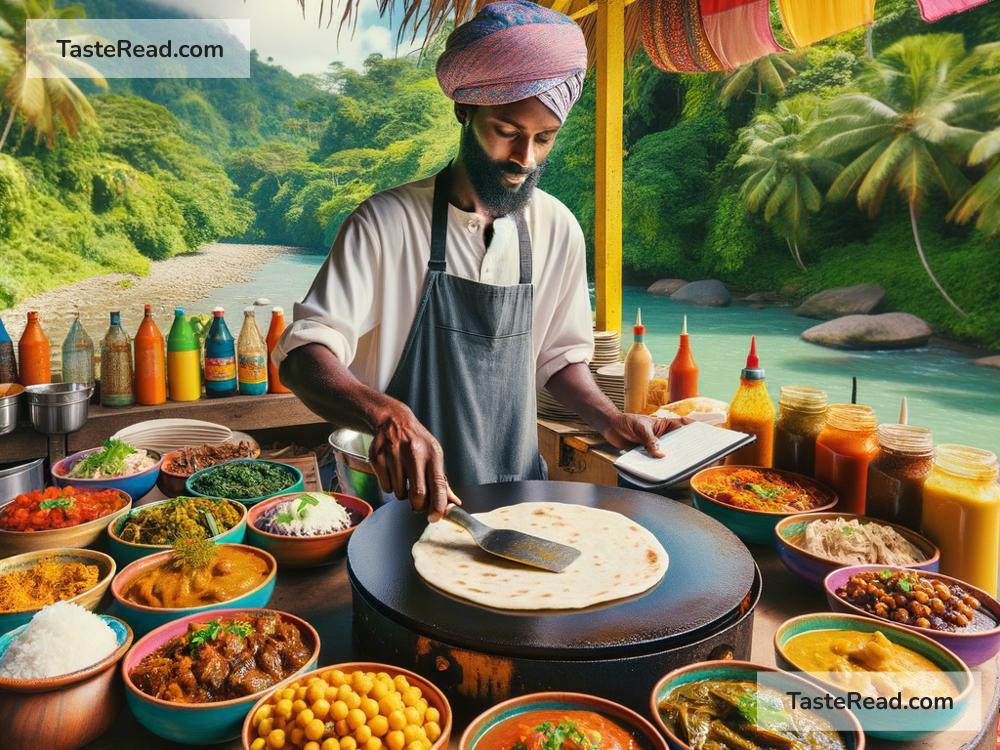Journeying Through Contemporary Caribbean Roti Adventures
If you’ve ever traveled to the Caribbean or tasted its food, you know it’s a melting pot of flavors, cultures, and traditions. Among its many treasures, roti stands out as a staple that has conquered hearts and stomachs across islands and beyond. One bite, and you’re instantly hooked! Today, we’re setting off on a beautiful journey through contemporary Caribbean roti adventures — exploring how this humble dish has evolved while still holding onto its roots.
What Is Roti?
Roti originally hails from India. It’s a type of flatbread made of wheat flour, water, and oil, cooked on a flat surface or pan called a “tawa.” Thanks to the indentured laborers from India who arrived in the Caribbean during the colonial period, roti made its way to the islands. Over time, Caribbean chefs put their twist on it, turning it into something uniquely their own.
But here’s the fun part: while the traditional roti is simple flatbread, Caribbean roti has evolved into something that’s much more than just bread. It’s often used as a wrap, stuffed with flavorful fillings like curried chicken, goat, shrimp, or chickpeas (known as channa). This “stuffed” version is what most people think of when they hear “Caribbean roti” today.
Exploring Caribbean Islands Through Roti
Each Caribbean island has its own take on roti. It’s truly fascinating how the same dish can be so different depending on where you go. Here are some highlights:
- Trinidad and Tobago: The King of Roti
Trinidad and Tobago is considered the Caribbean’s roti capital. Trinidadian roti comes in two main forms: “dhalpuri” and “paratha” (often called “buss-up-shut”). Dhalpuri roti includes a filling of ground split peas mixed with spices, while paratha is flaky and buttery, resembling a torn-up shirt — hence the nickname “buss-up-shut.” Fill these roti breads with mouthwatering curried meats, veggies, or even stewed pumpkin, and you’ve got yourself a feast.
Trinidadians take roti seriously, and you’ll even see roti shops lining the streets. A trip to Trinidad isn’t complete without stopping by one of these shops to grab a roti wrapped perfectly to-go.
-
Jamaica’s Unique Twist
While Jamaica might be better known for jerk chicken and ackee and saltfish, roti has found its own place in its culinary culture. Jamaican roti often resembles the Trinidadian style, but many local cooks add their own spin with bold spices and new fillings. A popular option is curried goat wrapped in soft, flaky roti. It’s the kind of food that will have you saying “one more bite” even after you’re full. -
Guyana: Where Tradition Meets Modernity
Guyanese roti looks similar to the Indian version but is typically thinner and layered with oil to make it soft and stretchable. Guyanese cooks take pride in pairing their roti with anything from rich curries to fried fish. In recent years, Guyana’s roti scene has exploded with innovative fillings and flavors, as younger chefs add unexpected twists to this traditional dish. -
St. Lucia, Barbados, and Beyond
In places like St. Lucia and Barbados, roti is equally beloved but varies slightly with local touches. For example, Barbadian cooks often use slightly thicker roti and pair it with savory stews or curried meats, reflecting their love for bold, hearty meals.
Contemporary Roti Adventures: What’s New?
Now, let’s talk about how roti is transforming in today’s world. Caribbean chefs and food enthusiasts are constantly experimenting with new flavors, presentations, and twists on traditional recipes. Here are some trends and innovations happening right now:
-
Gourmet Rotis
Some chefs are turning roti into a gourmet experience. Imagine roti wraps filled with slow-cooked lamb, roasted vegetables, or creamy seafood sauces. These aren’t your average street-food rotis; they’re elevated creations served in high-end restaurants. -
Fusion Rotis
Fusion food is taking the world by storm, and roti is no exception. Chefs are combining Caribbean roti with influences from Mexican, Asian, and American cuisines. Think of a chicken curry roti taco or a jerk pork roti burrito. It’s a cultural dance on your plate. -
Healthier Rotis
As people focus more on healthy eating, roti has adapted. Instead of the traditional flour, some cooks now make rotis with gluten-free alternatives like cassava or coconut flour. These options allow everyone, including people with dietary restrictions, to enjoy the magic of roti. -
Roti as a Global Star
Thanks to social media and international travel, Caribbean roti has reached parts of the world that might never have tasted it before. Restaurants and food trucks in major cities around the globe are popping up, offering roti to new customers curious about Caribbean cuisine. People everywhere now crave the comforting wrap stuffed with vibrant flavors.
Why Is Roti So Special?
Roti is more than just food; it’s a symbol of Caribbean history, culture, and resilience. It represents the blending of traditions and the creativity of people who’ve made this dish their own. Whether you’re eating roti on a sandy beach, at a bustling market, or in your kitchen at home, it has a way of connecting you to the Caribbean spirit and warmth.
So, the next time you crave something delicious, consider taking a roti adventure. Whether you try traditional versions or dive into contemporary innovations, you’re in for a treat. And remember, every roti you eat tells a story — a story of migration, adaptation, and the beautiful fusion of cultures that make the Caribbean so special.
Happy roti rolling!


